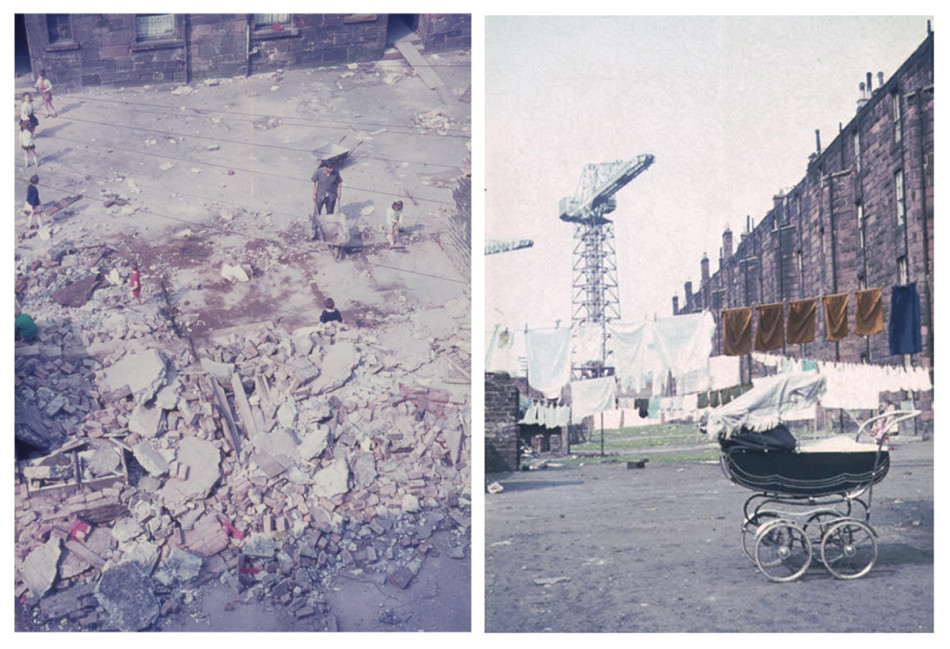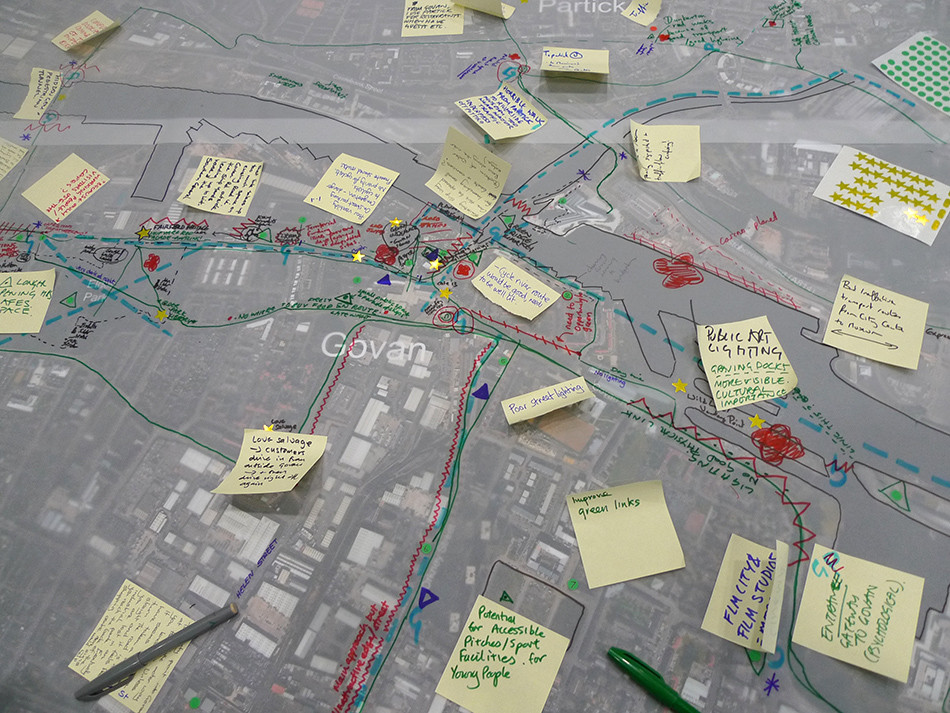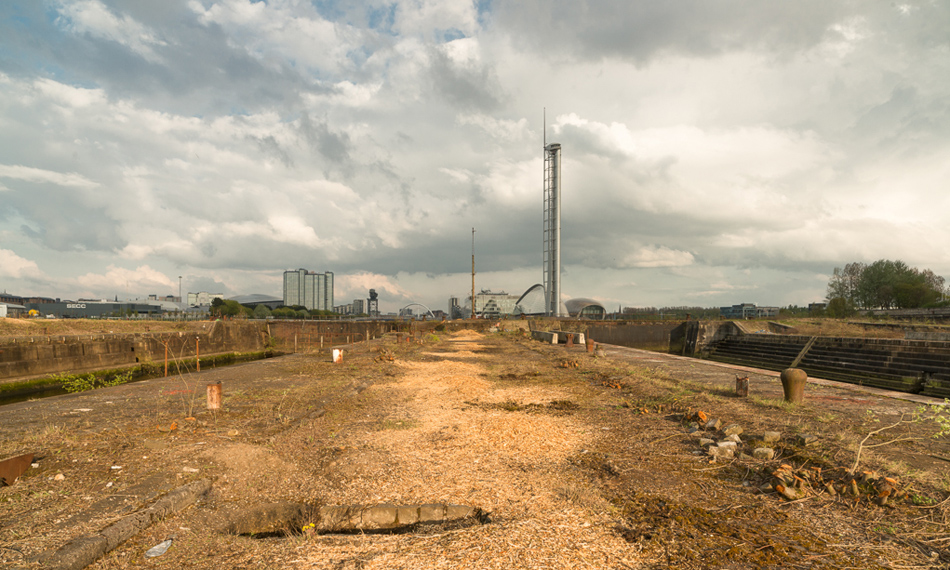Govan – ‘a reconnection’ photo story in Edge Condition magazine
Edge Condition Vol 5 published at the end of January included some of my Govan images in its placemaking edition. I have spent much time in the last few years involved with various initiatives in Govan that attempt to reinterpret Govan’s incredible past story, responding to the problems Govan has faced since deindustrialisation, with the loss of its vibrant and soulful raison d’etre. Having met many friends and associates within this conversation I quickly gained an attachment to the place – a camera being a valuable companion and commentator, in selecting elements and urban fragments that speak about values towards our urban environments and aspirations for a brighter future. Govan continues to redefine itself and its relationship to Glasgow, and The River Clyde, offering up opportunity for an appropriate reintegration with the wider city, and for its unique landscape and story to be recognised and built on.
In the midst of demolition and deindustrialisation, during the seventies Govan was pivotal in drawing on its resilient community and the participative efforts of the New Govan Society Task Force, and Assist Architects, to put in place a realisation of the value of tenement housing. The instrumental role of local housing associations began to flourish thanks to this tenement rehabilitation and resident engagement in Govan, inspired by the earlier pioneering actions of Mary Barbour and the 1915 rent strikes. This story is eloquently captured in Raymond Young’s book Annie’s Loo that charts the Govan origins of Scotland’s Housing Associations. The 2 pictures above are by Raymond Young and David Orr, and I had wanted to include these as the title images to my article but the editors decided to limit the images to my own selection, as well as skilfully editing down my text contribution to under 500 words! Not an easy task as there really is so much to say about Govan. My photo story pulls together only 13 images (see below) that attempt to show elements of an underlying physical and emotional essence to the area and highlight some of the sensitivities and fantastic creative interventions that the landscape reveals.
Community activism and creative activity continues to flourish within Govan, and the efforts of many have encouraged people to see Govan in new ways, recognising the potential to reimagine its place within the city, and reconnect its powerful story to the city today. Boundaries, cultural barriers, political sensitivities, and social deprivation remain ever present – the fall out from what was once such potent industrial land use, reemerging in claims of territory and calls for acknowledgement of various contested site’s cultural significance. Govan’s connection to the River Clyde itself – the very thing that the area owes its existence to, has been scarred and overlooked in recent decades. As with other parts of the city Govan has fallen victim to failed experiments in city planning and infrastructure, often taken at the expense of local residents and today with the impact and arrival of the new Southern General Hospital and the Fast Link Bus service through the area, its landscape is yet again being redefined on a large scale.
How these huge projects co-exist and mutually benefit the locality, creative endeavours and local knowledge within the community is of huge importance in ensuring that past mistakes are not repeated and that an appropriate future can be shaped in Govan that respects its unique contribution to the city. A sense of mis-trust exists with traditional procurement of development projects, often with planning interventions seen as untouchable, over complicated, or simply not transparent to the community despite measures being made to improve these. I’ve often thought that every area should have a drop in centre visible from the high street or town centre, that interprets all potential projects, concerns and aspirations for an area… in effect a health centre for the design of neighbourhoods.
A recent design ‘Charette’ commissioned by Glasgow City Council to look at forging links between Govan and Partick was led by Barton Willmore, consultants in large scale planning and regeneration projects. Tasked with exploring connections across the river, the process supported the idea of a new bridge linking the Riverside Museum with Govan, an evocative connection that is widely seen as a way to redetermine movement through the city, creating an economic boost to Govan as a place to live, work, and visit. Psychologically addressing Govan’s original parish boundaries across the river, a bridge also opens up the heritage and community assets in the area to visitors to the museum and beyond.
It is easy to get excited by the positive ideas and outcomes that emerge in these scenarios and conversations, albeit the strategic Development Framework leading to lasting change for decades to come. This certainly seems to be the ‘approach of the moment’ for consultation and participation as far as setting out the agenda for certain key areas of Glasgow’s development plan. Despite significant funds being invested in the process, it is important to realise the limitations of gathering public consultation within such an intense, short flurry of activity. There is a clear need for further dialogue and engagement with practitioners, residents and community interests if top-down planning processes are to be truly integrated with local aspirations. However, the process offers an opportunity to harness the sense of ‘creative community‘ evident in Govan and for this to be placed centrally in strengthening the identity of the area.
What became clear from the Charette is how much people want to see the Govan Graving Docks celebrated and brought back into use. The site is currently being explored for a variety of different interests from housing, to landscape, to heritage . Various housing projects have been on the cards for years and hopefully a more diverse, sensitive, and site-specific solution will ultimately be considered and taken forward. On first visiting the site back in 2011, I was struck by its special immense nature, and the potential to reassert ( or gently awaken ) its presence into the city – echoing the distant hum of shipbuilding activity and its contribution to Glasgow. As a gateway into Govan and a public landscape, it could perhaps ( in my humble opinion, fwiw!) offer a chance to incorporate activity and use of the water, with public art – heritage interpretation, landscape and bio-diversity. It would be great to see a reoccupation of part of the site for boat building, craft, waterside festivals or a community of shared interests to take hold. The landscape could become a central element in opening up and connecting Govan, the waterfront, and the city either side of the river. I imagine a place that speaks of its past endeavours – the immense achievement of industrial shipbuilding and construction; old materials emerging beneath the onset of time and landscape and fused with new interventions materials, artworks and landscape. However, if carefully integrated there is no reason why tourism, housing, cultural heritage and community facilities cannot be integrated into a vision that offers financial viability for the future and offers residents and visitors a key riverside location. The site is easily large enough to have a diverse landscape and an appropriate model of housing on the site would help foster a community and a sense of natural ownership. Hopefully it is not too late for dialogue and imagination to shape the future of this wonderful environment and for it not to fall solely into maximising private interests; its future pre-determined for all. All that is needed now is a clear, imaginative and shared vision to be formed. After all, it is far too important and special a place.



